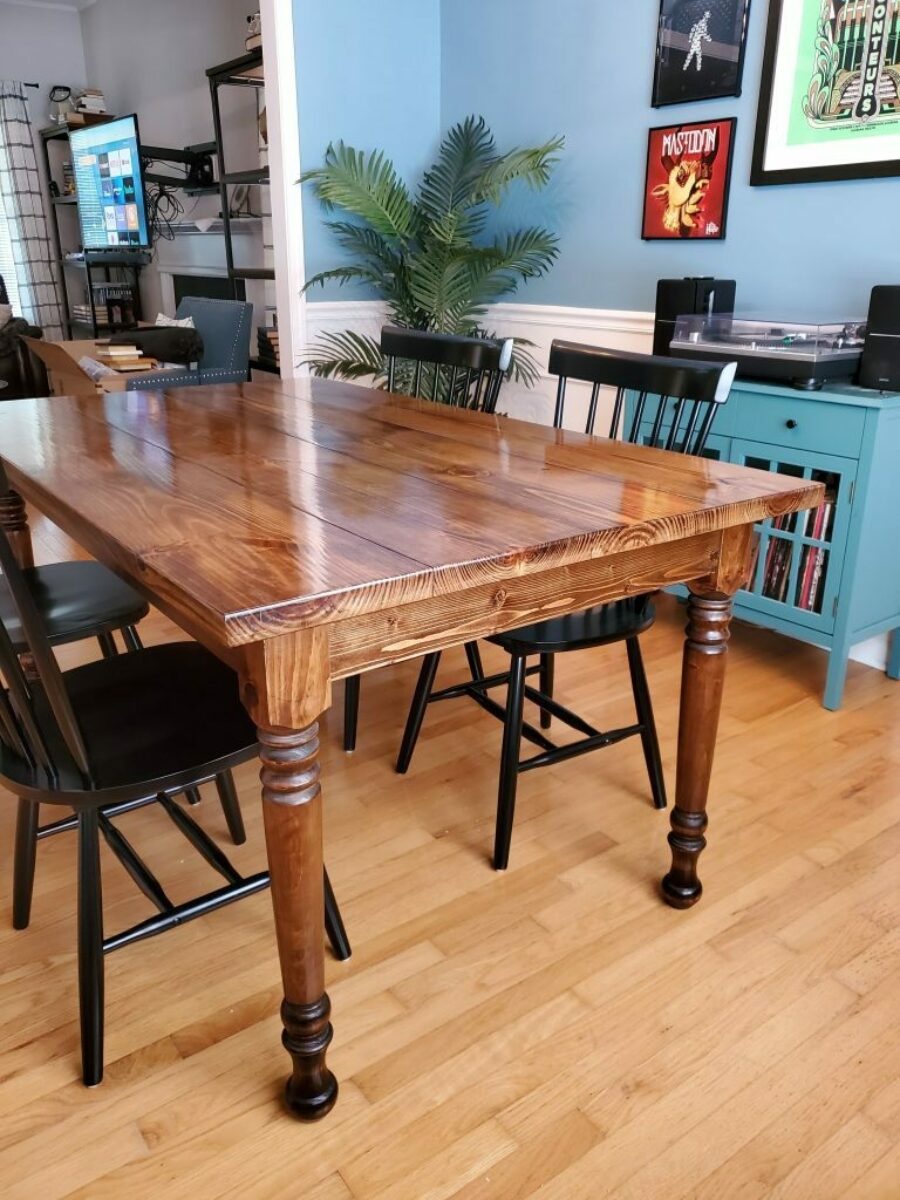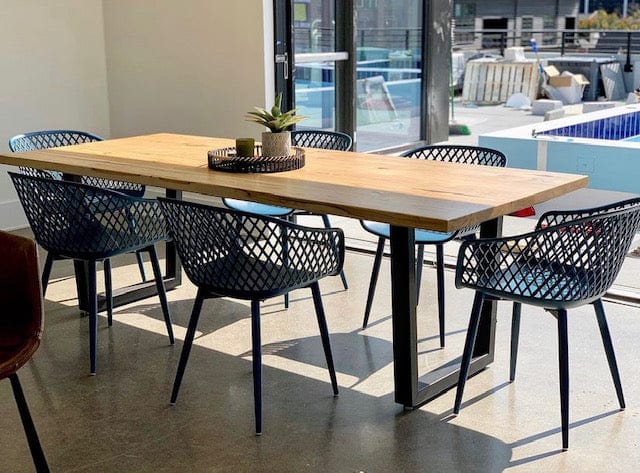The Top Trends in Dining Room Table Legs You Need to Know
The Top Trends in Dining Room Table Legs You Need to Know
Blog Article
From Typical to Modern: Locate the Perfect Dining-room Table Legs for Your Style
While traditional layouts such as cabriole and turned legs stimulate a feeling of ageless sophistication, modern designs like hairpin and geometric options present an opportunity for striking visual rate of interest. As you take into consideration these aspects, the concern stays: just how can you effortlessly incorporate these varied leg styles to produce an unified eating experience?
Comprehending Table Leg Styles
The variety of dining space table leg designs can significantly influence both the appearances and capability of the room. Each leg design adds special aesthetic elements and practical attributes, accommodating varied style preferences and usage demands. Comprehending these designs is critical for selecting the appropriate table that straightens with your general indoor style vision.
As an example, conical legs offer a clean, classic appearance that can improve an area's beauty, while pedestal bases provide stability and make best use of legroom, making them excellent for smaller spaces. Hairpin legs, a trademark of mid-century modern-day design, present a commercial flair, allowing for a ventilated, open feeling. Likewise, trestle legs stimulate rustic appeal, providing durable assistance and a feeling of eternity.
Wooden legs can bring heat and texture, whereas steel choices commonly share a smooth, modern vibe. Inevitably, comprehending table leg designs is necessary for creating a cohesive dining area that mirrors personal design while making certain functionality and comfort.
Traditional Table Leg Options
When selecting dining-room table legs, conventional alternatives often embody classic sophistication and craftsmanship. These styles show a rich heritage and a dedication to quality, making them excellent for those that value classic visual appeals.
One of one of the most famous typical leg styles is the cabriole leg, identified by its stylish bent shape. This layout usually includes attractive carvings and is most frequently found in Queen Anne and Chippendale furnishings. Another preferred choice is the turned leg, which boasts a collection of smooth, rounded forms that give a classic look while preserving stability.
Furthermore, the straight leg, while straightforward, uses a durable and unadorned structure that can mix effortlessly with a range of tabletop designs. For those attracted to ornate describing, claw-and-ball feet legs stimulate a feeling of magnificence and can function as a stunning focal point in any kind of dining room.
Finally, pedestal bases, although not strictly legs, give an alternate typical alternative that enables enough legroom and can be magnificently carved. Each of these typical leg designs adds to the overall setting of a dining space, marrying function with aesthetic appeal.

Modern Table Leg Styles
Modern table leg styles provide a diverse array of designs that highlight clean lines and ingenious products. These layouts commonly focus on performance while serving as striking centerpieces within an eating room. Minimalist appearances are prevalent, with legs crafted from materials such as steel, glass, and engineered wood, which contribute to a modern and airy feel.
One popular style is the barrette leg, identified by its slim, conical framework that offers stability without overwhelming the table top (dining room table legs). This style is typically discovered in mid-century contemporary furnishings and can effortlessly complement different table shapes. Another fad is using geometric forms, where legs might handle angular or unbalanced forms, including visual interest and a touch of creativity

Mixing Designs for Distinct Spaces
Typically, property owners seek to create special eating spaces that show their individual style by mixing various layout aspects. This method enables the unification of varied visual appeals, resulting in an unified yet distinct setting. As an example, matching a rustic wooden table with sleek, modern-day metal legs can produce an attractive contrast that raises the room's total appeal.
Additionally, integrating vintage table legs with news contemporary table go to this website tops can stimulate a sense of background while preserving a modern sensibility. Such mixes not just display individual taste yet likewise encourage creativity, enabling homeowners to curate a space that really feels both personal and welcoming.
Color plays an essential duty in this blending procedure; choosing table legs that match or comparison with the existing color pattern can improve visual rate of interest. For instance, whitewashed legs can soften the daring of a dark table surface, producing a well balanced aesthetic.
Tips for Selecting the Right Legs
Picking the right table legs is necessary for achieving both capability and aesthetic appeal in your dining area. Begin by considering the total style of your space. Conventional setups gain from legs that feature detailed carvings or transformed layouts, while modern rooms may require smooth, minimalist styles.
Next, evaluate the height and stability of the legs. dining room table legs. Typical table range in between 28 to 30 inches in height, so guarantee the legs enhance this measurement for convenience. In addition, durable products, such as hardwood or steel, can improve stability and long life
Assess the leg shape as well-- options consist of straight, tapered, or pedestal styles. Straight legs offer a classic look, while conical legs can add a touch of style. Pedestal bases give adequate legroom and are suitable for smaller sized spaces.
Final Thought
In summary, picking the perfect eating area table legs calls for careful factor to consider of both standard her comment is here and modern designs. Conventional options such as cabriole and turned legs use classic beauty, while modern-day designs like barrette and geometric forms supply a modern touch. By balancing leg style, elevation, and material with the general decor, a natural and inviting environment can be attained. Ultimately, the chosen table legs must reflect the desired visual, improving the eating experience within the space.
The range of dining space table leg designs can significantly influence both the aesthetics and performance of the space. Ultimately, understanding table leg styles is vital for creating a cohesive dining location that mirrors personal style while guaranteeing practicality and convenience.One of the most famous conventional leg designs is the cabriole leg, identified by its graceful rounded form. Straight legs use a classic look, while conical legs can include a touch of elegance.In recap, picking the optimal dining space table legs requires careful consideration of both modern and standard styles.
Report this page